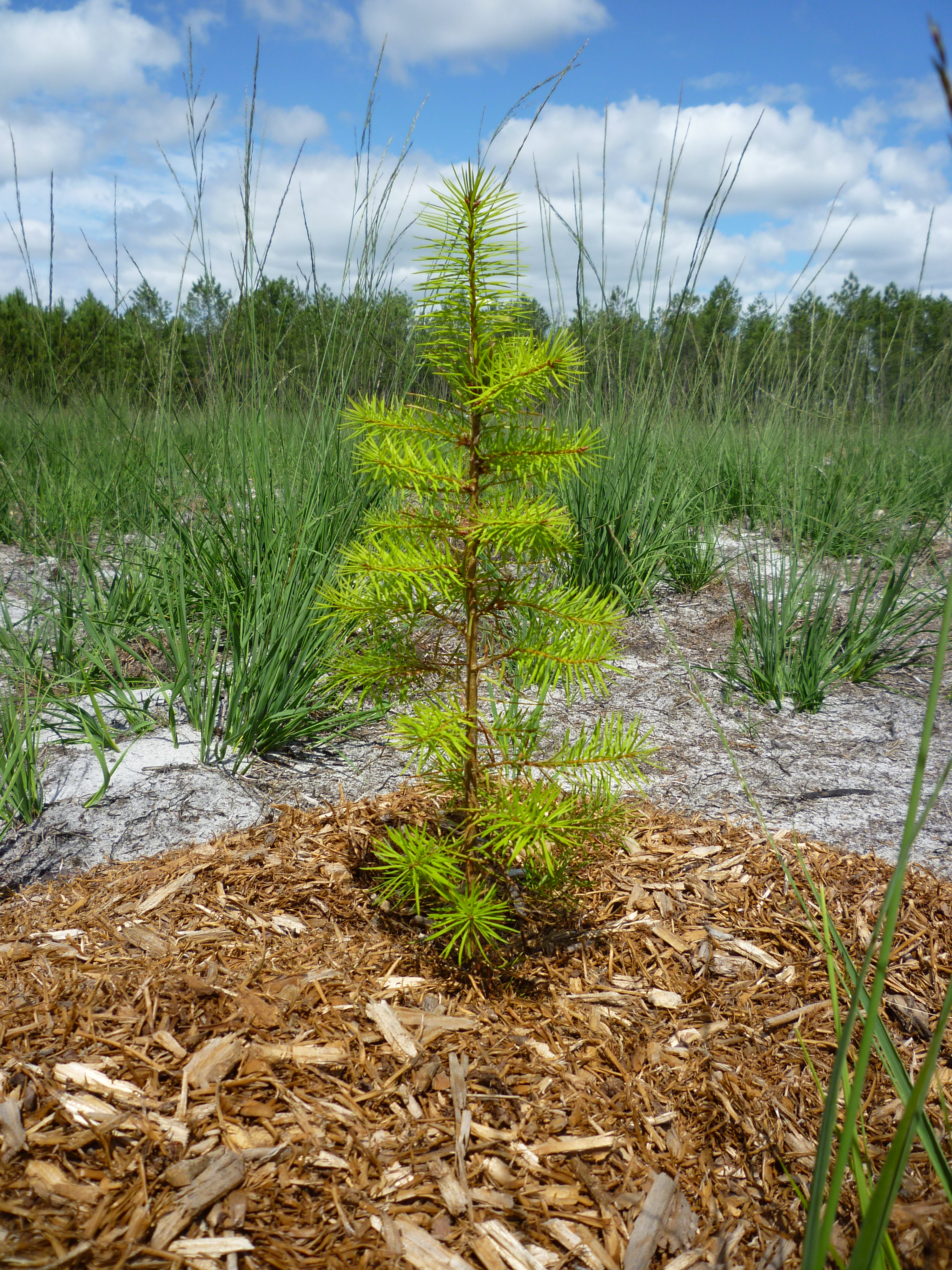Congress Spotlight #72 – Radioactive Contamination and Forests: Learning Lessons from Chernobyl and Fukushima
Congress Spotlight #72 – Radioactive Contamination and Forests: Learning Lessons from Chernobyl and Fukushima
Forests, except in the most severe cases, are quite resilient to radioactive contamination and will continue functioning normally.
That is one of the surprising takeaways from the nuclear accidents in Chernobyl and Fukushima.

Photo: FFPRI
Spotlight #59 – Shifting forest development discourses
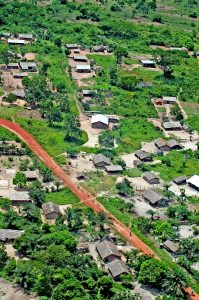
Conservation provides employment for local inhabitants at Dzanga Ndoki National Park, Central African Republic. ©Peter Prokosch, http://www.grida.no/resources/1516
Many centuries ago, a Greek philosopher noted that change is the only constant in life.
And change is brought about, in many instances, through discourse.
Discourse has been described in part as: “an ensemble of ideas, concepts and categories through which meaning is given to social and physical phenomena…”
According to this definition, discourse refers to a particular set of related ideas, which are shared, debated and communicated using different formats.
Through various discourses, we can discover fresh information and be introduced to new and different perspectives. We are able to gain experience and insight. As a result, our thinking, our attitudes, and our approaches toward various issues can evolve and change.
Certainly the ways in which forests are viewed, managed and developed have changed as the discourses concerning them have evolved. Read more…
IUFRO Spotlight #57 – Transition in forest uses demands change in approaches

Wood chips being transported to a pulp mill. These chips represent the waste stream from a saw mill, but are becoming increasingly valuable as more and more uses for wood are developed. Photo by John Innes.
“The portfolio of goods and services from forests is now very different to that two decades ago; yet there is a disconnect between the institutional framework and these new forms of forest use, leading to efficiency, equity and legitimacy deficits,” said Dr. John Innes, Dean of the Faculty of Forestry at the University of British Columbia, Canada.
The changes – from forest planting and forest harvesting and operations, to forest use and forest products – occur at different levels. Today, forests produce a complex array of products from forest ecosystem services to timber and bio-products.
Market values are increasingly being attached to forest ecosystem services and this is changing the value systems associated with forestry. Read more…
IUFROAO2016 – The Beijing Declaration
IUFRO Regional Congress for Asia and Oceania 2016
24 – 27 October 2016, Beijing, China
Forests for Sustainable Development: The Role of Research
The Beijing Declaration
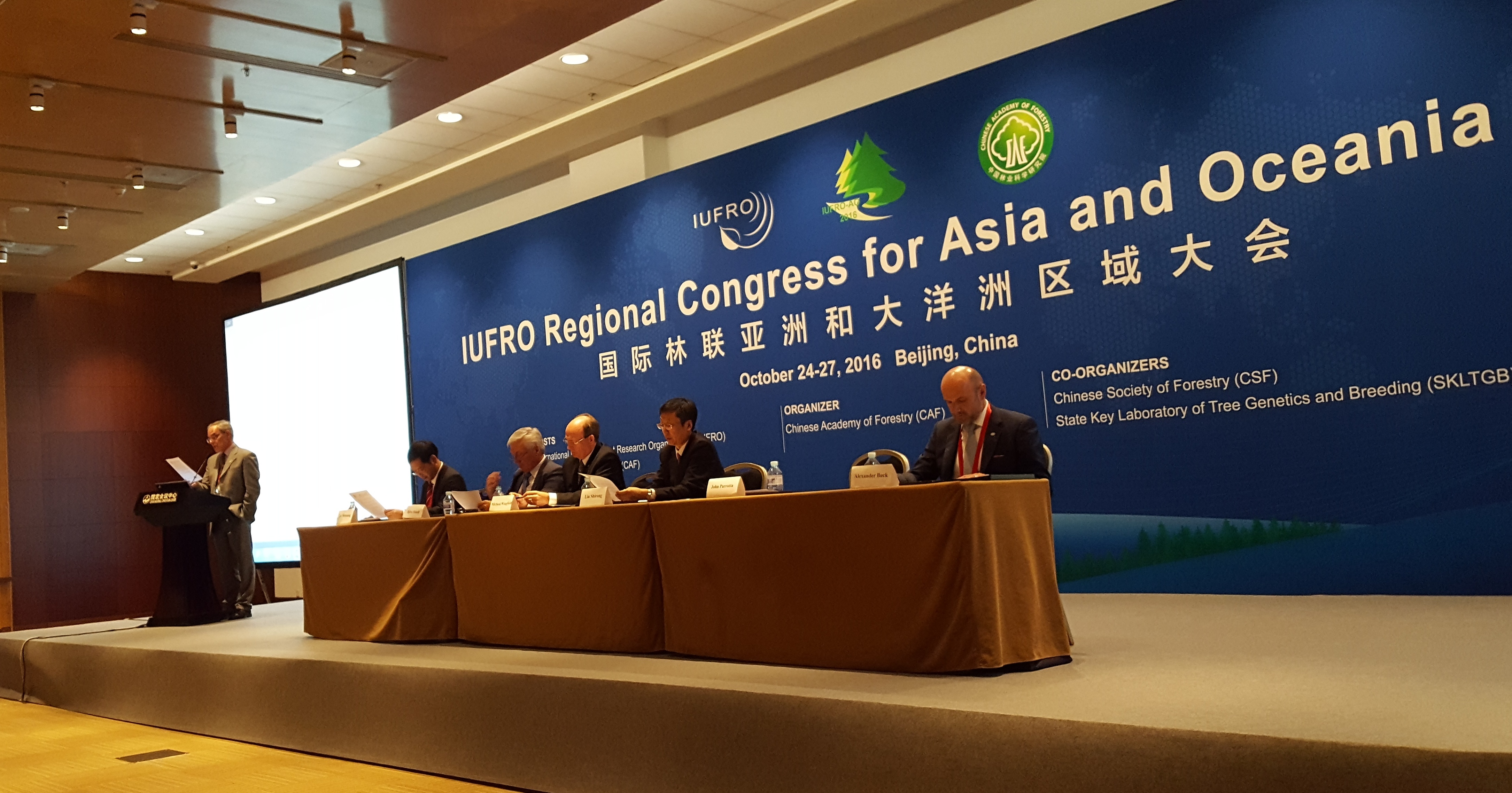
IUFRO Vice-President John Parrotta presenting the Beijing Declaration. Photo: Gerda Wolfrum, IUFRO Headquarters
IUFRO Spotlight #38 – Climate Change and Invasive Alien Species Worsen Outlook for Forest Health
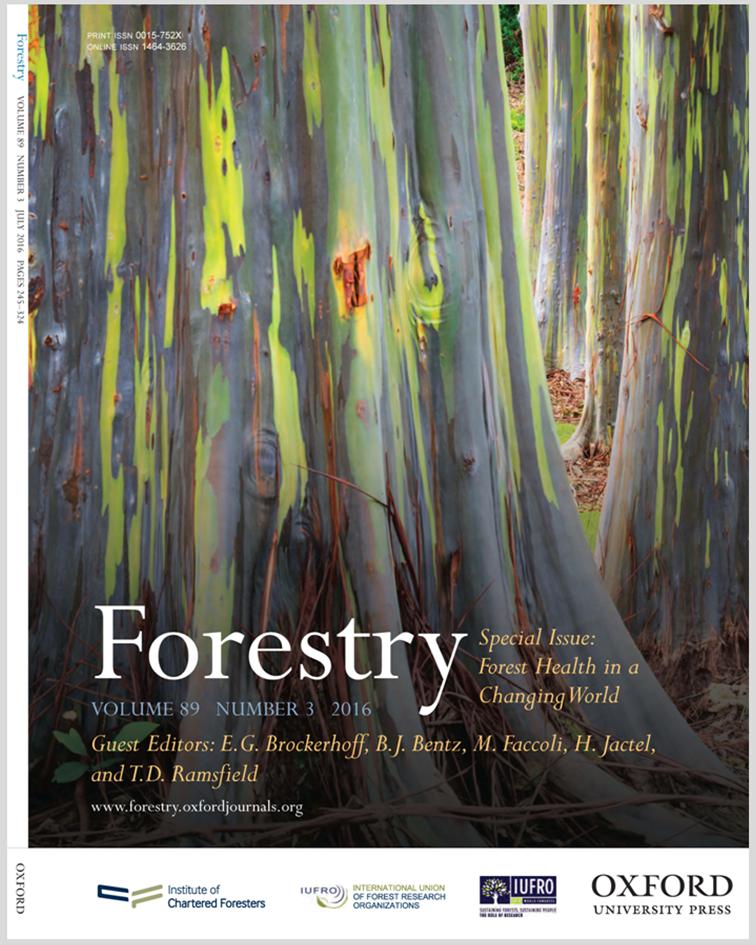
As global trade has expanded, there has also been an accompanying increase in invasions of insects and pathogens into areas where they never before existed.
In many cases these invasions have caused significant forest damage, negative economic impacts and loss of forest ecosystem services.
Meanwhile, climate change is affecting the geographic distribution of host trees and their associated insects and pathogens. Increased pest impacts – both native and alien – can be expected.
Congress Spotlight #26: To manage forests sustainably – think synergy
To manage forests sustainably – think synergy
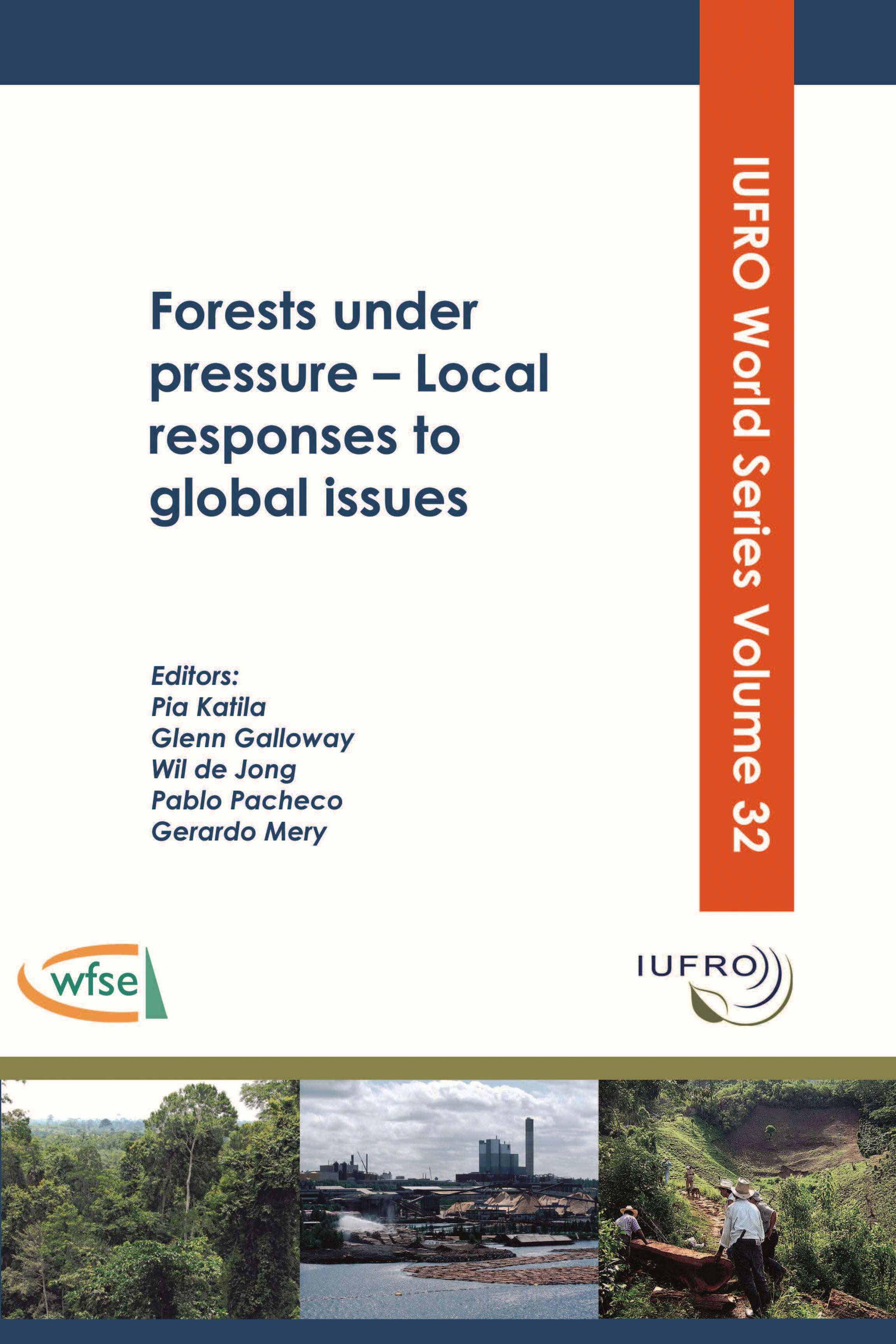 A comprehensive study of the conditions that assist sustainable forest development will be published at the upcoming IUFRO World Congress this fall in Salt Lake City, USA.
A comprehensive study of the conditions that assist sustainable forest development will be published at the upcoming IUFRO World Congress this fall in Salt Lake City, USA.
The title of the publication, produced by the IUFRO Special Project on World Forests, Society and Environment (IUFRO-WFSE), is Forests Under Pressure – Local Responses to Global Issues.
Congress Spotlight #17 – Forest outlook: What does the future hold?
Forest outlook: What does the future hold?
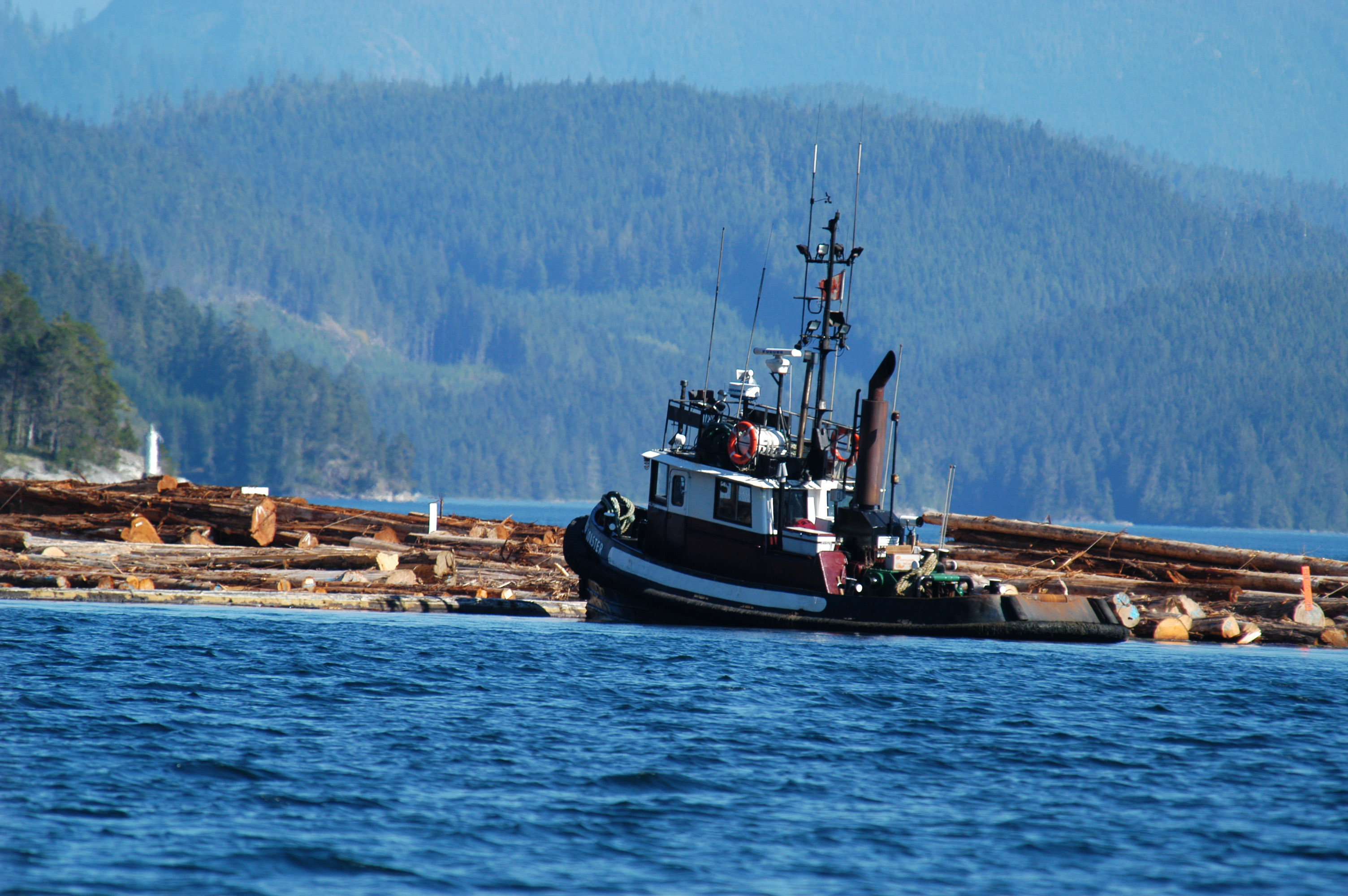
Logs being moved by sea to a sawmill. Major changes in the patterns of demand for logs may result in them being processed in a different country to where they were harvested. (Photo by John Innes)
Forest researchers from around the world will gather at the IUFRO 24th World Congress in Salt Lake City this fall where one of the issues will be to address the future, and the related challenges, facing forests and forest management in the 21st century.
Providing a sort of scientific crystal ball to give glimpses into the years ahead and discuss how to meet and adapt to coming challenges will be a sub-plenary session at the congress entitled, appropriately enough, “The Future of Our Forests”.
Resources for the Future (http://www.iufro.org/science/task-forces/resources-for-future/), the IUFRO Task Force behind this session, has set out to examine four major game-changers – globalization, plantations, new products and forest ecosystem services – and what they mean, and will mean, for forests, forest research and forest-dependent communities.
New expert panel assesses linkages between forests and food security
Forests play a major role in achieving Millennium Development Goal 1 to eradicate extreme poverty and hunger and in striving for food security. Globally, millions of people depend on forests for their food security and nutrition, directly through the consumption or sale of foods produced in forests, indirectly through forest-related employment and income, forest ecosystem services, and forest biodiversity.
Current approaches to increasing food security tend to concentrate on agricultural solutions, ranging from intensification of agricultural production outside of forests to promoting agroforestry systems. Policy recommendations to establish a framework for promoting food security from forests, however, have so far been rather general and no framework addresses the relationship between forests and food security directly.
The “International Conference on Forests for Food Security and Nutrition”, held at FAO Headquarters in Rome in May 2013, inter alia conveyed the key message that forests, trees and agroforestry systems demand greater attention in strategies for food security and nutrition and in the fight against hunger. It also called for improved data collection at national and international levels.
Spotlight #15 – Planted forests’ roles: Different strokes for different oaks
Planted forests’ roles: Different strokes for different oaks
Planted forests are vital but vulnerable resources that can contribute in a sustainable fashion to some of humanity’s most pressing needs – poverty alleviation, food security, renewable energy, mitigation of and adaptation to climate change, and biodiversity conservation – as well as the preservation of natural forests.
These are among the findings in the recently published Summary Report of the 3rd International Congress on Planted Forests. It is based on outcomes from three scientific workshops and a plenary meeting that took place earlier this year.
Thirty-three countries have greater than 1 million hectares of planted forest area. Together these countries comprise 90% of the world’s 264 million hectares of planted forest which, in turn, equals almost 7% of the total global forest area. The report takes into account key research findings from Africa, Asia, Europe, Oceania, Latin America and North America related to vulnerability, viability and governance of planted forests.


